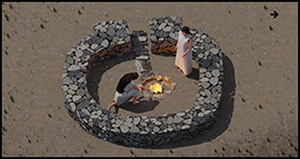Article contents
Embedded religiousness and the Kotosh religious tradition in highland Peru: the site of La Seductora
Published online by Cambridge University Press: 17 February 2023
Abstract

Religion played a key role in the social organisation and political authority of early Andean societies. Excavations at La Seductora in Peru have identified a circular structure with a central hearth and an underground ventilation shaft. The authors argue that the structure belongs to the Kotosh religious tradition, which dominated the central Andes during the Late Archaic and Formative periods (2800–550 BC). Probably representing a small shrine for use by local families, the authors situate La Seductora within the context of power and religiosity in Andean society, providing a model of relevance to similar contexts elsewhere in the world.
Keywords
- Type
- Research Article
- Information
- Copyright
- Copyright © The Author(s), 2023. Published by Cambridge University Press on behalf of Antiquity Publications Ltd.
References
- 2
- Cited by


